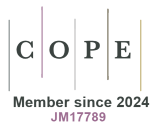Most read articles by the same author(s)
- Antonio Cuneo, Roberto Ravasio, Nicola Amedeo Mazzanti, Economic evaluation of therapeutic sequences in the treatment of patients with chronic lymphocytic leukemia and coexisting conditions , Global and Regional Health Technology Assessment: Vol. 4 No. 1 (2017): January-December 2017
- Nicola Amedeo Mazzanti, Carolina Scauri, Bianca Domini, Chiara Vassallo, Simone Cusato, Chiara De Fino, Filippo de Marinis, Advanced-Metastatic Non-Small-Cell Lung Cancer EGFR-mutated in Italy: patient management costs and potential productivity losses , Global and Regional Health Technology Assessment: Vol. 6 No. 1 (2019): January-December 2019
- Carlo Lazzaro, Fabiano Di Marco, Nicola Scichilone, Fulvio Braido, Marco Contoli, Paola Rogliani, Pierachille Santus, Valentina Acciai, Carla Scognamillo, Irene Olivi, Angelo Guido Corsico, Cost-description and multiple imputation of missing values: the SATisfaction and adherence to COPD treatment (SAT) study , Global and Regional Health Technology Assessment: Vol. 5 No. 1 (2018): January-December 2018









